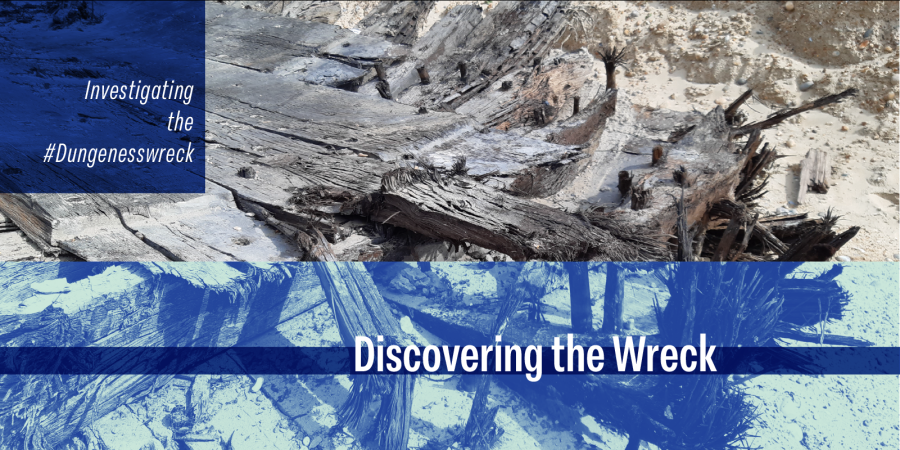In spring 2022, staff at Cemex’s quarry on the Dungeness headland in Kent, came across a wooden shipwreck while excavating in the quarry lake for aggregate. In the year since its initial discovery, working for Kent County Council and funded by Historic England, the wreck has been investigated and recorded by archaeologists and discovered to be a rare example of a late 16th-century vessel. To celebrate the discovery of the Dungeness wreck a year on, we are releasing a series of blogs going behind the scenes. This first blog focuses on the initial discovery of the wreck, with insights from Senior Maritime Archaeologist, Alistair Byford-Bates, about his initial visit to the site.
When sections of ship timbers were discovered at the Cemex Quarry in Kent, the quarry staff knew that they had something interesting. At least four large sections of hull were recovered by the backhoe dredger that operates at the quarry, from approximately 4-6 m below the water level.
An archaeological exclusion zone was put in place around the location of the finds by the quarry staff whilst Site Manager, Michael Hinson, reported the wreck to the Marine Aggregate Industry Protocol for the Reporting of Finds of Archaeological Interest (MAIAP). This is the first time that a find had been reported from a terrestrial quarry and the discovery really highlighted the robustness of the Protocol.
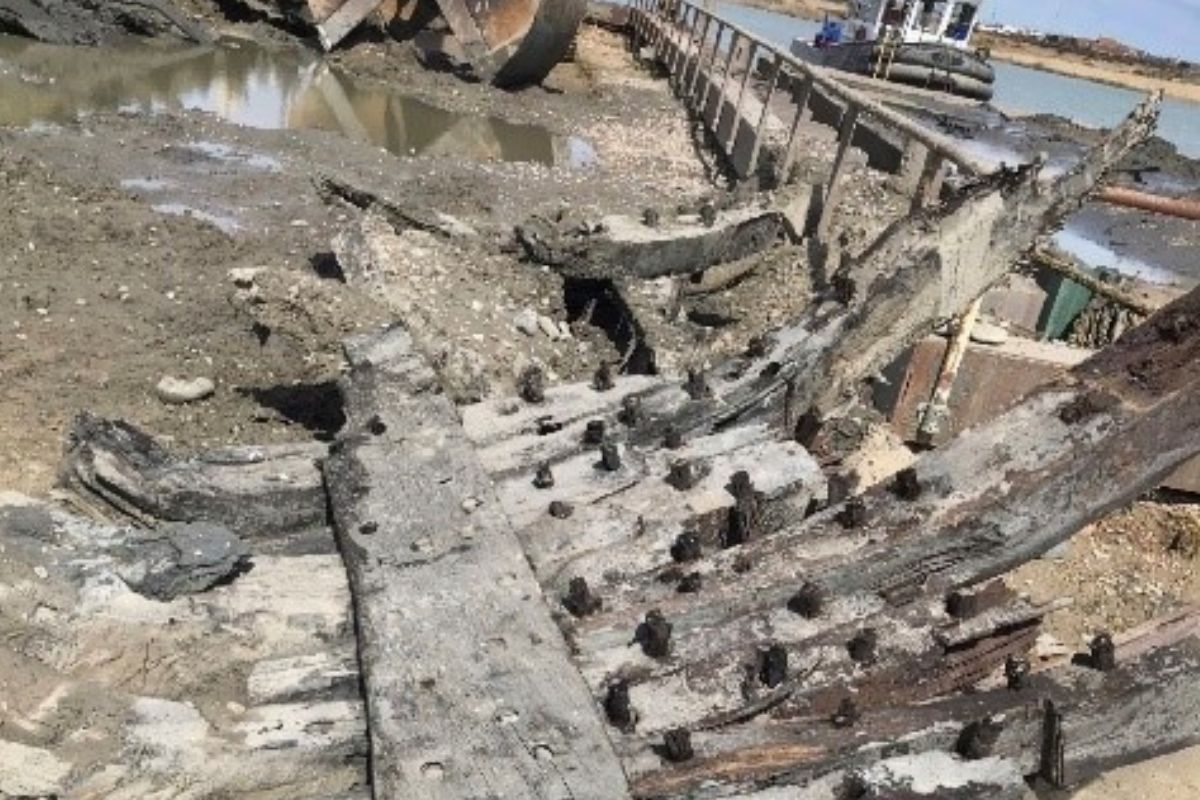
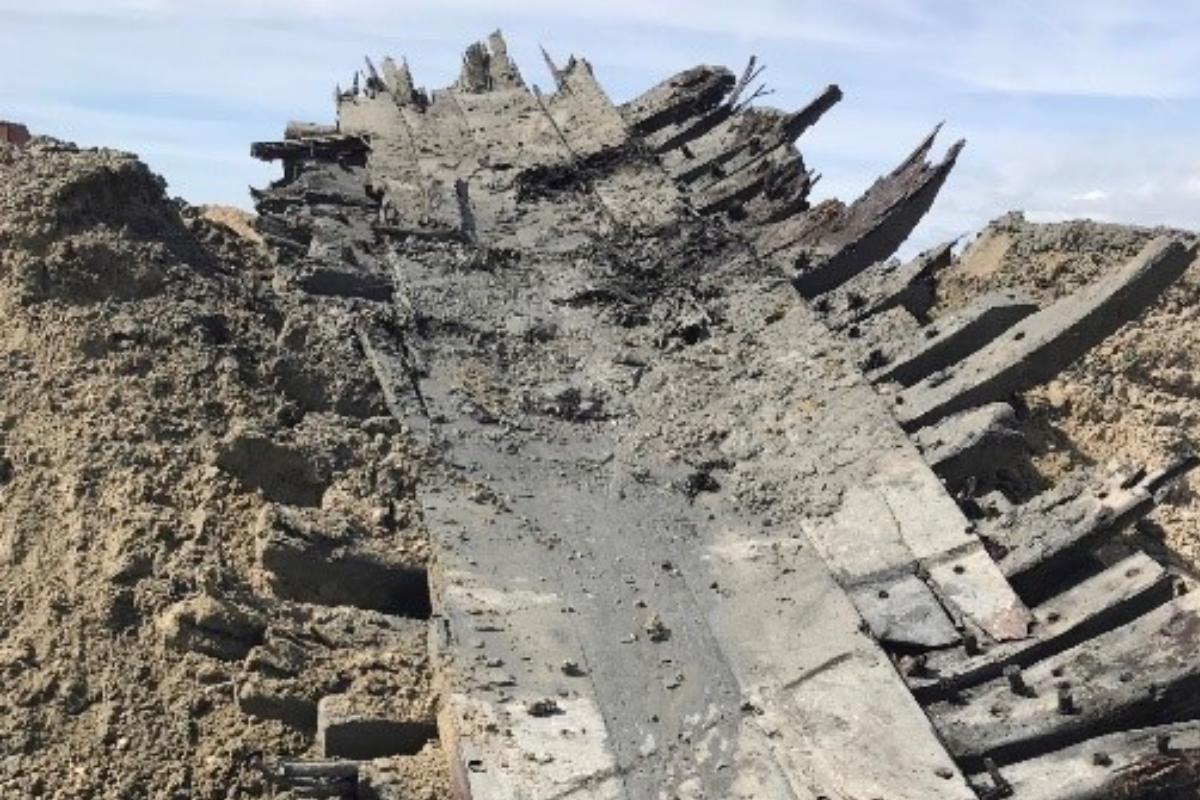
Initial images sent to the Protocol Implementation Team by quarry staff.
Senior Marine Archaeologist, Alistair Byford-Bates, carried out preliminary recording at the site to understand whether the remains were of archaeological significance. Here is what he had to say about his initial visit:
“It is not often that you get a call to say you’re needed at a land-locked quarry to look at ship’s timbers that have been recovered during dredging. The initial images supplied by Cemex quarry staff showed some loose timbers and a large section of a wooden wreck, recovered several hundred metres from the sea!
The staff at the quarry, under their manager Michael Hinson, were exceptionally helpful and supportive, as well as very interested to find out about what they had recovered. Having gone through site induction and introductions, I was kindly loaned a yard brush to sweep off the ubiquitous layer of sand that settles on everything in the almost constant breeze that blows across the marsh and got started on cleaning off the timbers. It was at this point I realised how much they had already found for us to look at, and how significant it might be, based on its location, and construction.
What I was looking at had five structural elements comprising four sections of frames and planking, and one large section of hull with both inner and outer planking. In addition to these there was a mix of loose frames and planks. In the time available, I numbered them and then carried out a basic survey, recording measurements, and taking multiple photographs, in order to aid further analysis and inform the next stage of the process. What was clear from the outset was that it was a well-constructed and well-preserved open water sailing vessel, with potentially enough material surviving to calculate its scantlings (ship’s dimensions), build method, and date. This last one was helped by what appeared to be a number of frames with sapwood, and even bark present, all factors to aid dendrochronology dating of the wood.
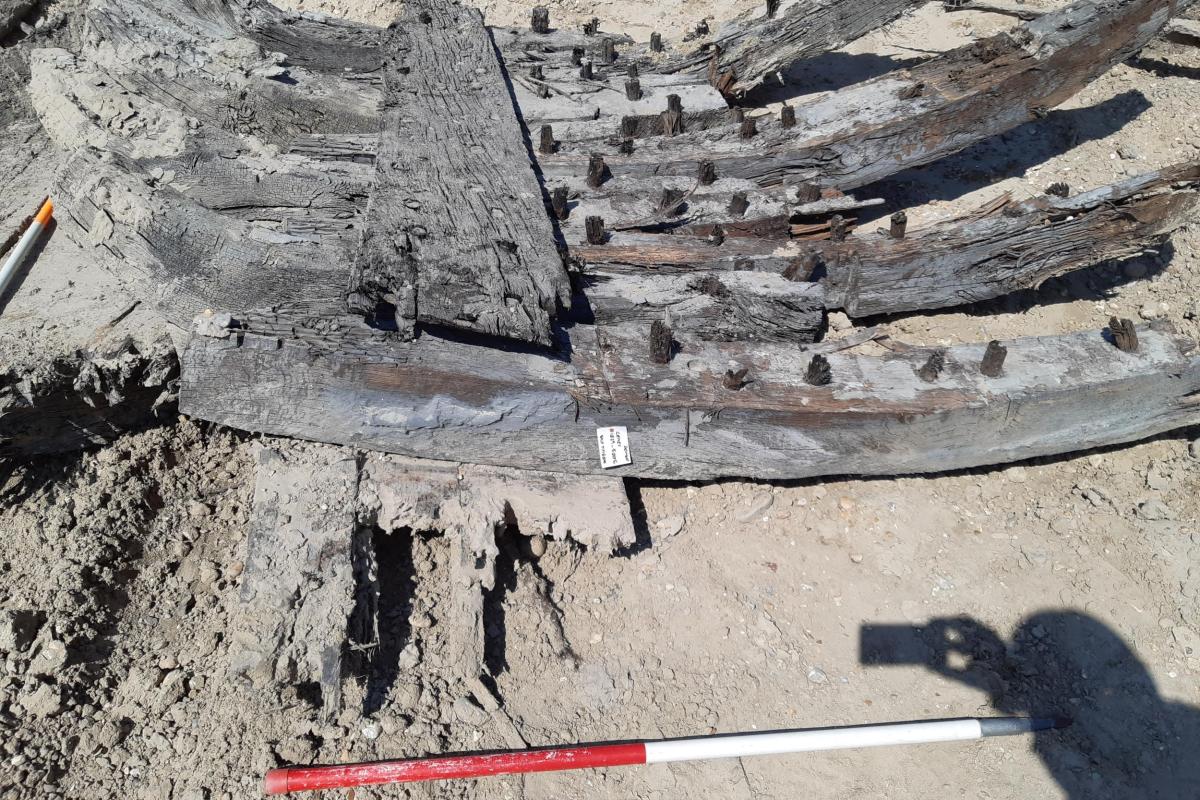
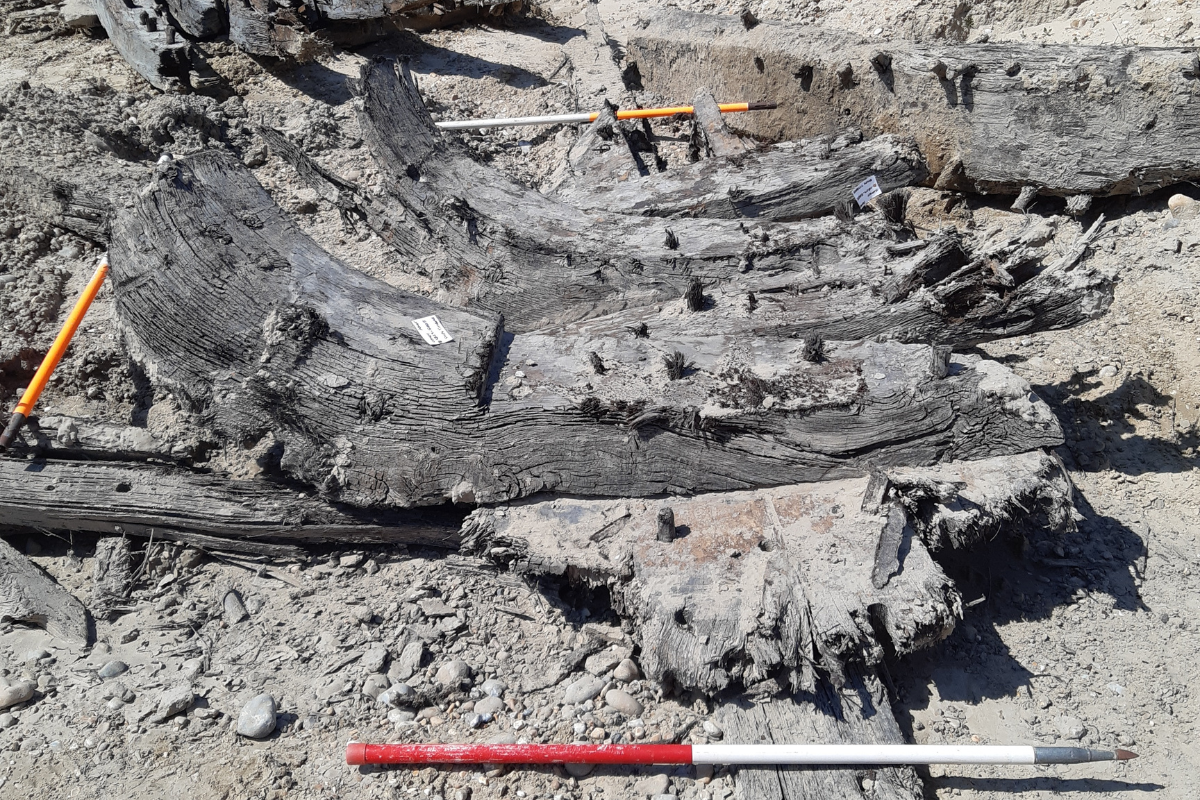
Pictures taken by Alistair during his initial visit to the quarry.
Having carried out a basic survey, I was able to share with Cemex staff what I’d found out. Firstly, it appeared archaeologically important, so their reporting of it was commendable. I could also reveal that it appeared to be at least several hundred years old; and finally, we’d have to come back to record it in detail to fully understand what it was and its importance.
The location of the shipwreck suggested it was possibly linked to the shipyards and harbour at Small Hythe and the Cinque Ports. These were a confederation of ports, along the Kent and Sussex coast, dating back to at least the eleventh century, with their origin potentially in the Saxon period. The fact that it was found so deep and below the storm beach gravel illustrates just how much the Dungeness landscape has changed since the wreck was buried and in itself presents an interesting avenue for further research.”
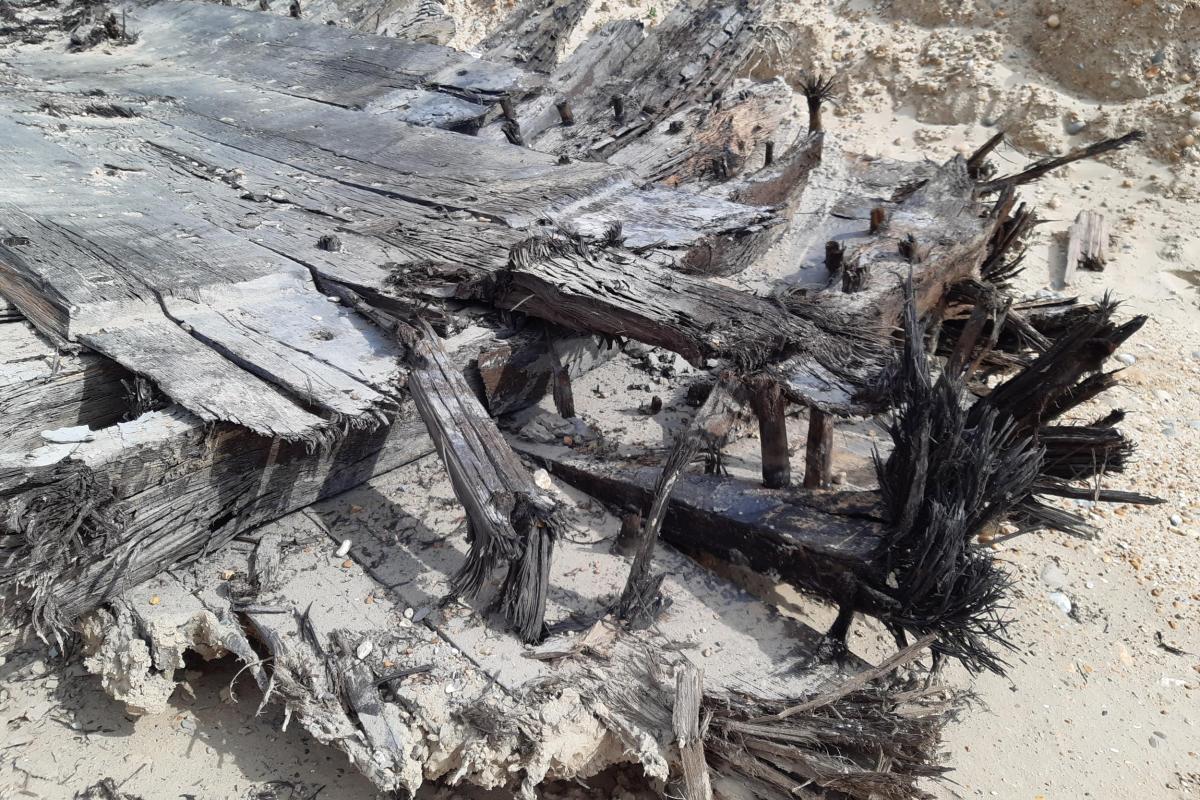
Frayed ends of timbers recorded by Alistair.
It was immediately identified that the wreck could be significant, and due to this and the potential threat of rapid degradation once the timbers were recovered, it was agreed with Kent County Council and Historic England to proceed with a phase of emergency recording.
The next stage of investigating this wreck was sending a team of archaeologists to record and analyse the wreck. Check this out in the next blog of this series!
